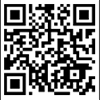【六届通译杯比赛辅导】初赛题目分类介绍之听力选择题2
【六届通译杯比赛辅导】初赛题目分类介绍之听力选择题2
上周,我们跟大家简单介绍了听力选择的答题技巧,今天我们再来跟大家谈谈听力选择题拿到高分的两个小“窍门”。
一、Prediction
预测是十分重要的一环。如果没有提前读题进行预测,正确率一定会大打折扣。那么怎样进行预测呢?
最有效的方法就是划出关键词。上周我们也有提到划出关键词,那么什么样的词才算“关键”呢?我们要找的其实是一种”高调词”,如比较显眼的专有名词,人名,数字甚至是引号。举个例子:
The ‘Study for Success’ seminar lasts for____.
分析:题干中,课程名称既用了大写又加了引号,显而易见是所谓的”高调词”,所以同学们可以毫不犹豫地等待音频中的原词重现。
What does Dan say about the town of Rivas?
分析:题干中,Rivas是个明显的专有名词,应该是一个地名。考试中建议同学们将这个词默读一下,熟悉其发音,便于听时定位到这个词。
二、留心强转折信号词
所谓强转折信号词,不外乎but, however, yet. 只要是出现这类转折词,尤其是but后面的内容一定是考点。而许多同学在听力的过程中并未重视这一点,或者说在听的过程中没能够抓住这一点,原因是什么呢?
造成后者的原因其实很简单,就是所谓的“强读”与“弱读”。以but为例,正常发音是:[bʌt],但考试中音频经常为[bət], 甚至[bə], 而且速度非常快,导致许多学生没法识别出来。希望通过今天的介绍同学们能在以后的练习中对这一类转折词加以注意。
最后,附一道听力选择题供大家巩固练习。
选择题:
1. Which of the following is not the reason why stem cells can be used in 3-D printing technology?
A. Stem cells can develop into many different kinds of cells in the body
B. Stem cell could grow into tissue
C. They can also repair damaged tissues and organs
D. Induced pluripotent stem cells (IPS), are used to replace tissues lost to disease or injury.
2. Which of the following is not the materials being used in 3-D printing technology?
A. Files in computer
B. Plastic
C. Metal
D. Special ink
3. Which of the following is true according to the text?
A. Nano dimension tested that the process of making one layer at a time until the objects reach full form is fast
B. Every layer of tissue within an organ, or skin, or any part of the body, has just a mixture of cells
C. The companies have produced fully functional human tissue for medical use
D. The technology of 3-D printing stem cells has only been proved in concept.
4. The two companies, Nano Dimension and Accellta, are cooperating in the field of?
A. Resembling tissue
B. Patent application
C. How to print fast
D. Liver disease
5. Which of the following cannot be inferred from what William Wagner said about the 3-D printing?
A. 3-D technology will be very useful.
B. It can help you to do a thousand experiments in parallel
C. Production of complex human tissues, such as full organs, has been happened already
D. 3-D printing would likely be more successful in producing simpler tissues like skin or muscle
原文:
An Israeli company has asked the United States Patent and Trademark Office for legal rights to a process for making a special kind of human cell.
The company, Nano Dimension, says it uses a specialized 3-D printer to create an environment in which stem cells could grow into tissue.
Stem cells can develop into many different kinds of cells in the body. They can also repair damaged tissues and organs. One kind, called induced pluripotent stem cells (IPS) are used to replace tissues lost to disease or injury.
The term 3-D is short for three dimensional. That means an object has length, width and height.
In 3-D printing, 3-D models are first created as files on a computer. The printer then uses a material like plastic or metal to create physical objects. The process involves making one layer at a time until the objects reach full form.
Usually this process is slow. But Nano Dimension said it has tested a 3-D printer that can produce stem cells much faster.
Nano Dimension is partnering with another Israeli company, Accellta, a developer of proprietary technologies to produce IPS cells. The patent application request describes the 3-D printing process for making human tissues and organs.
The companies have yet to produce fully functional human tissue for medical use.
Amit Dror is the head of Nano Dimension. He said testing has so far resulted in a “proof of concept” for 3-D printing stem cells.
“What we have proven [is] that we have the ability - by combining the know-how and IP [intellectual property] of both companies - to get to the right materials. And basically being able to print very fast, an array which resembles a tissue by using human stem cells.”
Special ink containing living stem cells is mixed with other substances to support growth, Dror said.
The goal is to create the right mixture that copies actual conditions in the human body.
“It’s not that every layer of tissue within an organ, or skin, or any part of the body, has just a mixture of cells,” Dror noted. “They are located in different concentrations in different places.”
Developing stem cells into life-like, functioning tissue has long been a problem for researchers.
William Wagner is the director of the University of Pittsburgh’s McGowan Institute for Regenerative Medicine. He says 3-D printing technology can be very useful.
“Let's say you're looking at a drug that would fix liver disease that causes the liver to not be able to enzymatically degrade some substance. Now you have the ability to do a thousand experiments in parallel, with liver tissue, with your drug, assessing the effectiveness of it.”
Wagner added that he believes production of complex human tissues, such as full organs, is still years away from happening. So 3-D printing would likely be more successful in producing simpler tissues like skin or muscle, he said.
【参考答案】
DADBC


 微信公众号
微信公众号 手机站
手机站